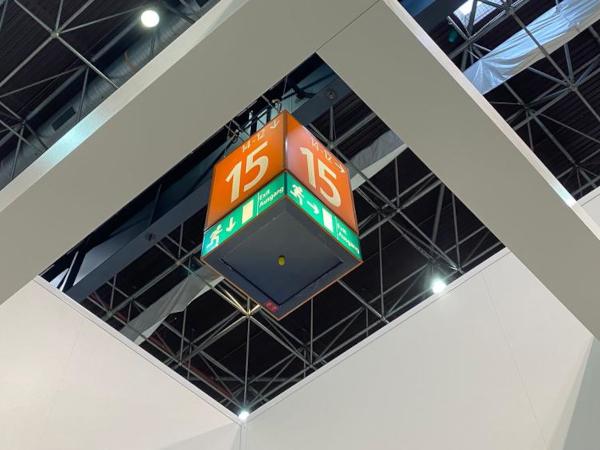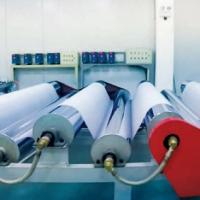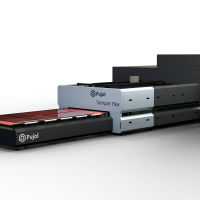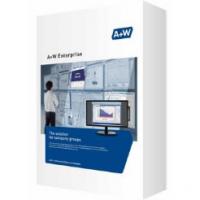
Date: 4 November 2022
The month of September was marked by the long-awaited return of the glasstec trade fair. We were all happy to finally meet in person again after the four-year break.
After the show, I asked our customers – glass processors – for their feedback on the event. To my surprise, many expressed their disappointment with the low number of new innovations and demo machines at the show.
Looking at glasstec 2022 from a machinery manufacturer’s perspective, I had a completely different feeling.
This got me thinking, why did glass processors see it that way?
I started reflecting on our innovations and industry innovations in general – and then it hit me! The reason why many innovations were not clearly visible is that most of them were digital or automated solutions.

1) Automation and digitalization enter the glass industry
Automation and digitalization are indeed entering the glass industry. We can see this trend from many perspectives:
- Increasing the number of full-factory solutions
- Introduction of different kinds of glass manipulators and robots
- Appearance of new automated solutions designed to simplify operators’ work
- Increasing popularity of process optimization systems
Glaston, too, was there to introduce Glaston Autopilot for flat tempering and flat laminating lines for the first time. Our Autopilot is based on the exact same breakthroughs and ideas applied in Tesla’s passenger car autopilot. Through autopilot, we help operators produce better-quality glass constantly – significantly reducing the need for experienced operators. For our customers, this was clearly a benefit. And we see this as a big game-changer for the industry at large. Have a look at how Autopilot changed operations at Bojar Glass in Poland.
When it comes to automating the insulating glass manufacturing process, we’ve witnessed an increased interest in the already proven TPS® technology that applies Thermo Plastic Spacer material directly onto the glass plate. Basically, the machine itself automates the entire IG production process significantly, making it simpler and much more efficient. And it’s well in line with the overall boom of process optimization and automation solutions.
Other examples of automating the insulating glass manufacturing process are new solutions for glass edge seaming and arrissing, automatic treatment of recently sealed insulating glass corners and automatic sealing technology.

In the automotive glazing business, the main automation goal today is traceability. For the most part, gathering large amounts of production data and linking it with inspection results is now the trend. This means that an increasing number of inspection machines will be added to processing lines. The next natural steps in digitalizing this sector will be process optimization and automating both setup and troubleshooting.
2) Integrated solutions
Integrating machines into larger automated solutions was also a hot topic in customer discussions. This is a great opportunity for many glass processors to increase their overall efficiency. In practice, this means integrating equipment or automation solutions (listed in the first part of this post) together and making it work as one fully automated system. Some glass processors have already gone through different types of integration projects and are well aware of this process. But many companies are about to tap into this opportunity for the first time. Usually, these projects include not only one supplier but several equipment and software providers who need to work seamlessly to reach the target integration and benefits.
If I can give only one tip on how to succeed in your automation project, I would emphasize recognizing the role of “an integrator”.
The more automated and integrated solution we are talking about, the more the project needs an “integrator”. This is in many ways a new role in our industry as many companies have focused in the past only on their specific role in the project. The integrator can be a separate company or it can be one of the machinery providers. But the main thing is that roles should be recognized and be well understood by everyone. Failing to do this can easily lead to an unclear scope and disagreements about responsibilities. As the number of different integrations are increasing heavily in the search of increased efficiency it’s at minimum good to ask who, in my project, will ensure the compatibility and overall fit of my project.
3) Energy savings in focus
Not so surprisingly, energy was a huge topic, too. Practically all our discussions started with the question, “How can we decrease our energy consumption?” Luckily, we had answers ready, as there are several energy-saving solutions available for glass processors.
In flat tempering, as an example, we introduced three concrete ways for our customers to decrease energy consumption.
- Automatically-adjusting quench system. If the loading is short, the system limits the airflow in the quench zone to a smaller area, reducing waste energy.
- New blower technology. Especially with thinner glasses, this solution significantly reduces energy consumption. It contributes to increased safety, too.
- Reporting systems. Advanced reporting allows glass processors to see how their energy is consumed and adjust operations accordingly.
In lamination, new convection-based technology offers the most energy-efficient glass processing in the market due to the lowest amount of wasted energy. Many other systems or conventional technologies let the heat escape from the furnace because of the technology they use, such as infrared lamps. Because of considerable energy savings, glass processors can enjoy very short payback periods for laminating machines based on new technology.

In the automotive sector, energy efficiency is just as important. Most, if not all, major original equipment manufacturers (OEMs) have announced their commitment to becoming carbon-neutral within their operations in the near future. In this regard, glass processing furnaces with active convection technology are of help. They are much more energy efficient than conventional furnaces with radiation heating and well support the ambitious goals of OEMs.
4) Growing laser technology
Last but not least, we observed interesting developments in laser technologies. Many companies in the field have further improved their solutions and it was great to see a wide variety of solutions in this field.
Today, laser cutting seems to be closer to the volume market than ever before. And we likely start to see good solutions for a wider group of glass processors at least in the next glasstec.
Yet compared to traditional cutting, laser cutting is still not very cost-efficient. Even though technology has been considerably improved, the cost may be an issue that will prevent this solution from capturing the market in the near future.
Summary
Those are my main takeaways from glasstec 2022, mainly from a machine manufacturer’s point of view. And some things are clear. First, digitalization is finally here, and it’s here to stay. As more companies begin to enjoy the benefits of automation, this area will no longer be so underestimated and invisible in the future. Second, in light of the energy crisis, the industry is seriously concerned about cutting energy costs. For us as technology manufacturers, this is just another reminder to keep energy issues in mind with everything we produce.
 600450
600450






























Processing lines will incorporate more and more inspection equipment. Process optimization and automation of setup and troubleshooting will be the next logical steps in this industry's digital transformation.